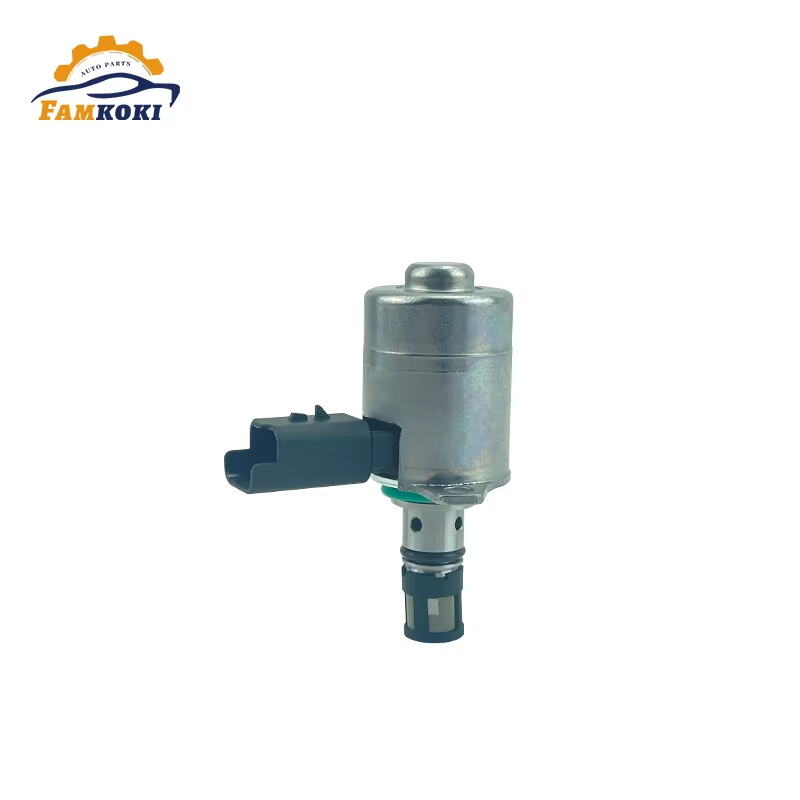Le rôle du capteur d'oxygène dans les performances et les émissions du moteur
Le capteur d'oxygène joue un rôle essentiel dans l'amélioration des performances du moteur et le contrôle des émissions en surveillant les niveaux d'oxygène dans les gaz d'échappement. Ce capteur fournit une rétroaction critique à l'unité de commande du moteur (ECU) pour affiner le mélange air-carburant pour une combustion optimale. En maintenant l'équilibre du mélange, le capteur d'oxygène assure une utilisation efficace du carburant et minimise la libération de polluants nocifs. Ce procédé complexe permet non seulement d'améliorer l'efficacité énergétique, mais aussi de réduire considérablement les émissions, contribuant ainsi à rendre l'air plus pur et à respecter les normes environnementales.
L'entretien régulier du capteur d'oxygène est essentiel pour obtenir des relevés précis et un fonctionnement efficace du moteur. En vérifiant, en nettoyant et en remplaçant les capteurs d'oxygène au besoin, on peut prévenir toute une série de problèmes. Les défaillances des capteurs peuvent entraîner des ajustements incorrects du rapport air/carburant, entraînant une faible efficacité énergétique et une augmentation des émissions. Une maintenance constante signifie que votre moteur fonctionne sans heurts, contribue à prolonger sa durée de vie et garantit que votre véhicule respecte les normes d'émission. En investissant dans des soins réguliers des capteurs d'oxygène, vous protégez la santé de votre véhicule et l'environnement.
Amélioration de l'efficacité énergétique grâce à la maintenance des capteurs d'oxygène
Le maintien d'un capteur d'oxygène en bon fonctionnement est crucial pour optimiser le mélange carburant-air, ce qui a un impact direct sur l'efficacité du carburant. Un capteur d'oxygène fonctionnant correctement assure l'équilibre idéal entre le carburant et l'air, ce qui améliore la combustion et augmente la puissance de sortie. Ce mélange optimal améliore non seulement les performances du moteur, mais contribue également à l'efficacité énergétique, ce qui en fait un composant essentiel du système de contrôle des émissions du véhicule.
La maintenance régulière des capteurs d'oxygène permet d'économiser du carburant à long terme. Les données provenant de rapports de l'industrie indiquent que les véhicules équipés de capteurs d'oxygène constamment entretenus présentent des réductions notables de la consommation de carburant. Au fil du temps, cette réduction de la consommation de carburant se traduit par des économies financières importantes. Par exemple, une étude du ministère américain de l'Énergie montre que des capteurs d'oxygène défectueux peuvent augmenter la consommation de carburant de 40%. Par conséquent, une maintenance constante contribue non seulement à des avantages environnementaux en réduisant les émissions, mais offre également des avantages économiques substantiels aux propriétaires de véhicules.
Lutte contre la pollution: réduction des émissions grâce à des capteurs
Les capteurs d'oxygène jouent un rôle crucial dans le contrôle des émissions en surveillant les niveaux d'oxygène dans les gaz d'échappement de votre véhicule. Ces capteurs aident l'unité de commande de votre moteur à effectuer des ajustements en temps réel du mélange air-carburant, assurant une combustion optimale et réduisant considérablement les émissions de polluants nocifs. En transmettant avec précision les données sur la teneur en oxygène, les capteurs d'oxygène permettent aux véhicules de fonctionner de manière plus propre, ce qui entraîne une réduction des émissions et un impact environnemental moindre.
Le respect des normes d'émission est essentiel à la fois pour le respect de la réglementation et pour la protection de l'environnement. Les organismes environnementaux du monde entier ont établi des lignes directrices strictes pour contrôler les émissions des véhicules, exigeant que les véhicules respectent des normes spécifiques pour limiter la pollution. L'entretien régulier des capteurs d'oxygène est essentiel pour assurer le respect de ces normes. Le maintien des capteurs en parfait état permet d'éviter les pénalités liées aux échecs des tests d'émissions et contribue à l'effort mondial de réduction de la pollution liée aux automobiles. En maintenant une fonctionnalité de capteur appropriée, les véhicules peuvent fonctionner efficacement dans les paramètres acceptables fixés par la réglementation environnementale, favorisant un environnement plus propre et plus sain.
Prolonger la durée de vie du moteur grâce à des contrôles réguliers des capteurs
Les contrôles réguliers des capteurs d'oxygène sont essentiels pour prévenir les dommages au moteur, notamment en maintenant un rapport de carburant approprié. Un capteur d'oxygène non entretenu peut entraîner des mélanges d'air et de carburant incorrects, provoquant des coups de moteur ou des dommages graves au fil du temps. Selon une étude de la Société des ingénieurs automobiles, une mauvaise gestion du rapport air-carburant peut augmenter l'usure des composants du moteur jusqu'à 20%, démontrant le rôle essentiel d'un capteur d'oxygène fonctionnel dans la protection du moteur.
En outre, l'entretien constant des capteurs d'oxygène réduit considérablement l'usure des composants du moteur. Les experts affirment que l'entretien régulier des capteurs assure le bon fonctionnement du moteur, ce qui prolonge la durée de vie des composants clés. En prévenant les effets néfastes d'une combustion incorrecte du carburant, tels que l'augmentation des émissions et le stress excessif sur le convertisseur catalytique, des capteurs bien entretenus contribuent à la bonne santé et aux performances du moteur. Cette approche proactive permet non seulement d'économiser sur les réparations coûteuses, mais aussi d'améliorer la longévité globale du véhicule.
Amélioration des performances du moteur grâce à la maintenance des capteurs d'oxygène
Le maintien d'un capteur d'oxygène en bon fonctionnement est crucial pour des performances optimales du moteur. Un capteur fonctionnant correctement assure le bon équilibre de l'air et du carburant dans le moteur, favorisant un fonctionnement en douceur et une meilleure accélération du véhicule. Lorsque le capteur d'oxygène détecte avec précision les niveaux d'oxygène dans les gaz d'échappement, il permet à l'unité de commande du moteur (ECU) de régler l'injection de carburant en conséquence. Ce processus assure le fonctionnement efficace du moteur, offrant aux automobilistes des performances et une réactivité fiables.
L'entretien régulier des capteurs d'oxygène a un impact positif sur l'expérience de conduite globale en assurant un moteur bien réglé. Un véhicule doté d'un mélange air-carburant régulé de manière précise permet de fonctionner plus facilement, ce qui réduit la charge sur le moteur et augmente sa longévité. En conséquence, les conducteurs peuvent faire l'expérience d'une conduite plus réactive, caractérisée par une accélération améliorée et un son optimal du moteur, ce qui améliore le plaisir de conduire. En mettant l'accent sur des contrôles constants des capteurs, les conducteurs peuvent s'assurer de tirer le meilleur parti de leur véhicule, ce qui leur procure satisfaction et économie à long terme.
Économies de coûts significatives grâce à la maintenance à long terme des capteurs d'oxygène
L'entretien d'un capteur d'oxygène par des contrôles et un nettoyage réguliers peut permettre d'économiser des coûts substantiels en évitant des problèmes majeurs du moteur. Un capteur d'oxygène bien entretenu assure que le moteur fonctionne efficacement, réduisant ainsi les risques de problèmes tels qu'une consommation de carburant élevée ou un feu " Check Engine " défectueux. En réglant ces petits problèmes à un stade précoce, vous éviterez des réparations plus graves et coûteuses. Une maintenance régulière prolonge la durée de vie de vos capteurs d'oxygène, ce qui réduit la fréquence des remplacements nécessaires et réduit ainsi les coûts de réparation.
De plus, avec des soins appropriés, il est moins nécessaire de remplacer les cheveux au fil du temps. Selon certains spécialistes, en veillant régulièrement à la propreté des capteurs d'oxygène et en effectuant des contrôles préventifs, on peut retarder considérablement l'usure. En surveillant la santé de votre capteur d'oxygène, vous pouvez prolonger sa durée de vie, ce qui contribue non seulement à maintenir des performances optimales du véhicule, mais réduit également les dépenses associées aux remplacements fréquents des capteurs. En gardant le capteur en bon état, vous réduisez au minimum les dépenses inutiles, ce qui permet de maintenir l'efficacité de votre moteur et votre budget.
Questions fréquemment posées
Pourquoi le capteur d'oxygène est-il important pour les performances du moteur?
Le capteur d'oxygène est essentiel pour les performances du moteur car il surveille les niveaux d'oxygène dans les gaz d'échappement, permettant à l'unité de commande du moteur (ECU) d'ajuster le mélange air-carburant pour une combustion optimale. Cela garantit une utilisation efficace du carburant, améliore les performances et réduit les émissions.
Que se passe-t-il quand un capteur d'oxygène tombe en panne?
Lorsque le capteur d'oxygène tombe en panne, il peut entraîner un ajustement incorrect du rapport air-carburant, entraînant une mauvaise efficacité énergétique, une augmentation des émissions et des dommages potentiels au moteur. L'entretien régulier et le remplacement des capteurs défectueux sont essentiels pour prévenir ces problèmes.
À quelle fréquence les capteurs d'oxygène doivent- ils être vérifiés et remplacés?
Les capteurs d'oxygène doivent être vérifiés régulièrement dans le cadre de l'entretien de routine du véhicule. En général, ils doivent être remplacés tous les 60 000 à 90 000 km, mais il est préférable de suivre les recommandations du fabricant et de surveiller l'état du capteur pour une maintenance rapide.
Un mauvais capteur d'oxygène peut-il affecter la consommation de carburant?
Oui, un capteur d'oxygène défectueux peut augmenter considérablement la consommation de carburant. Il peut entraîner un mélange incorrect air-carburant, entraînant une combustion inefficace et une consommation de carburant plus élevée, ce qui peut augmenter les coûts du carburant et affecter les performances du véhicule.
Comment la maintenance des capteurs d'oxygène contribue-t-elle à la réduction de la pollution?
La maintenance des capteurs d'oxygène contribue à la réduction de la pollution en veillant à ce que le moteur maintienne des conditions de combustion optimales. Cela réduit les émissions de polluants nocifs, aide les véhicules à respecter les normes environnementales et protège la qualité de l'air.
Tableau du contenu
- Le rôle du capteur d'oxygène dans les performances et les émissions du moteur
- Amélioration de l'efficacité énergétique grâce à la maintenance des capteurs d'oxygène
- Lutte contre la pollution: réduction des émissions grâce à des capteurs
- Prolonger la durée de vie du moteur grâce à des contrôles réguliers des capteurs
- Amélioration des performances du moteur grâce à la maintenance des capteurs d'oxygène
- Économies de coûts significatives grâce à la maintenance à long terme des capteurs d'oxygène
-
Questions fréquemment posées
- Pourquoi le capteur d'oxygène est-il important pour les performances du moteur?
- Que se passe-t-il quand un capteur d'oxygène tombe en panne?
- À quelle fréquence les capteurs d'oxygène doivent- ils être vérifiés et remplacés?
- Un mauvais capteur d'oxygène peut-il affecter la consommation de carburant?
- Comment la maintenance des capteurs d'oxygène contribue-t-elle à la réduction de la pollution?
 EN
EN
 AR
AR
 FR
FR
 KO
KO
 PT
PT
 RU
RU
 ES
ES


